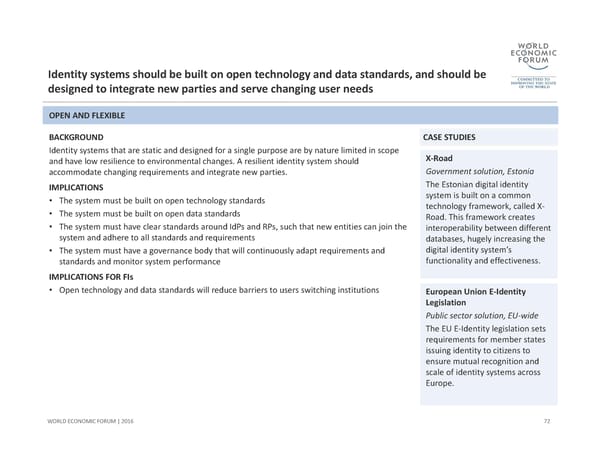Identity systems should be built on open technology and data standards, and should be designed to integrate new parties and serve changing user needsBACKGROUND Identity systems that are static and designed for a single purpose are by nature limited in scope and have low resilience to environmental changes. A resilient identity system should accommodate changing requirements and integrate new parties. IMPLICATIONS •The system must be built on open technology standards •The system must be built on open data standards •The system must have clear standards around IdPs and RPs, such that new entities can join the system and adhere to all standards and requirements •The system must have a governance body that will continuously adapt requirements and standards and monitor system performance IMPLICATIONS FOR FIs •Open technology and data standards will reduce barriers to users switching institutions 72 WORLD ECONOMIC FORUM | 2016 OPEN AND FLEXIBLE CASE STUDIESX‐Road Government solution, Estonia The Estonian digital identity system is built on a common technology framework, called X‐ Road. This framework creates interoperability between different databases, hugely increasing the digital identity system’s functionality and effectiveness.European Union E‐Identity Legislation Public sector solution, EU‐wide The EU E‐Identity legislation sets requirements for member states issuing identity to citizens to ensure mutual recognition and scale of identity systems across Europe.
 A Blueprint for Digital Identity Page 72 Page 74
A Blueprint for Digital Identity Page 72 Page 74